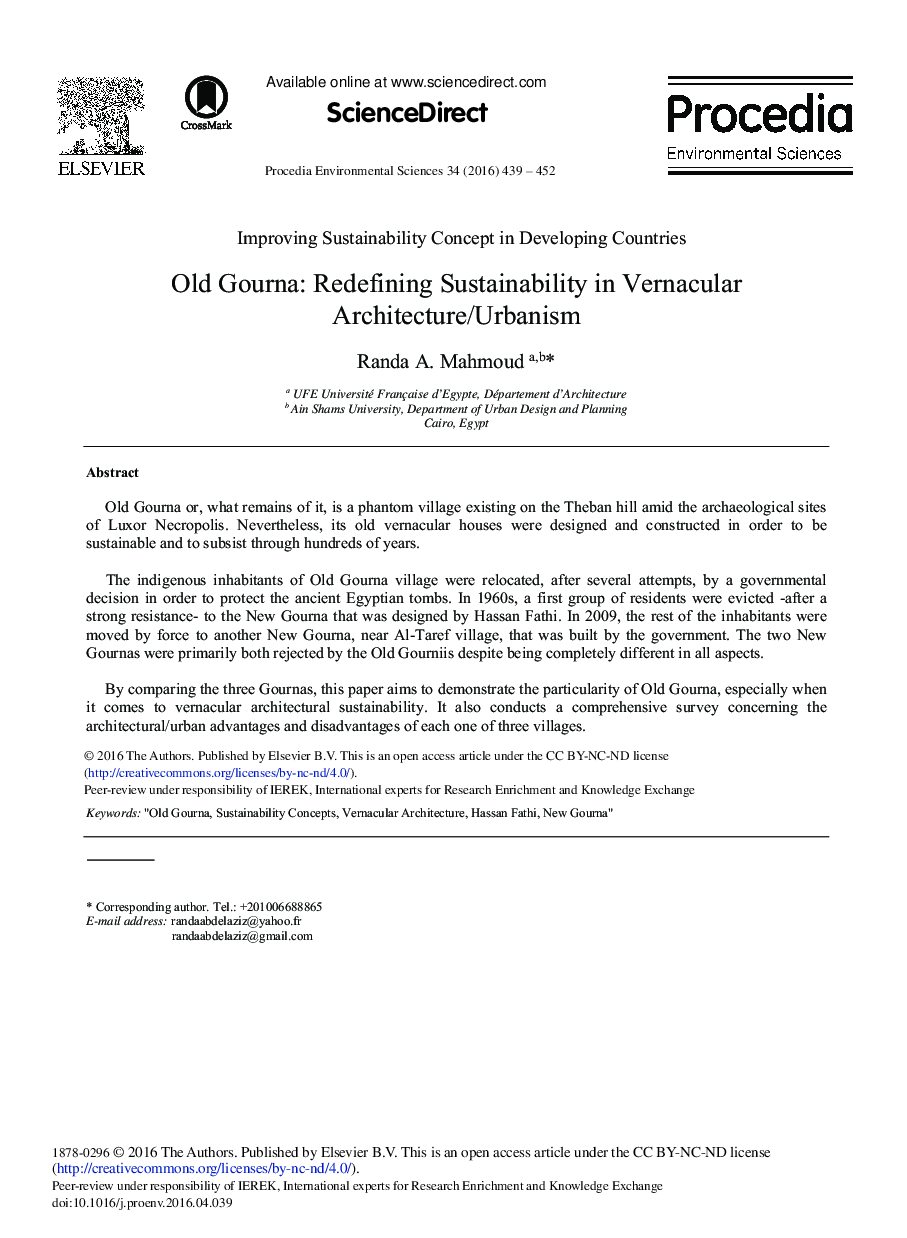| Article ID | Journal | Published Year | Pages | File Type |
|---|---|---|---|---|
| 4401489 | Procedia Environmental Sciences | 2016 | 14 Pages |
Old Gourna or, what remains of it, is a phantom village existing on the Theban hill amid the archaeological sites of Luxor Necropolis. Nevertheless, its old vernacular houses were designed and constructed in order to be sustainable and to subsist through hundreds of years.The indigenous inhabitants of Old Gourna village were relocated, after several attempts, by a governmental decision in order to protect the ancient Egyptian tombs. In 1960s, a first group of residents were evicted -after a strong resistance- to the New Gourna that was designed by Hassan Fathi. In 2009, the rest of the inhabitants were moved by force to another New Gourna, near Al-Taref village, that was built by the government. The two New Gournas were primarily both rejected by the Old Gourniis despite being completely different in all aspects.By comparing the three Gournas, this paper aims to demonstrate the particularity of Old Gourna, especially when it comes to vernacular architectural sustainability. It also conducts a comprehensive survey concerning the architectural/urban advantages and disadvantages of each one of three villages.
